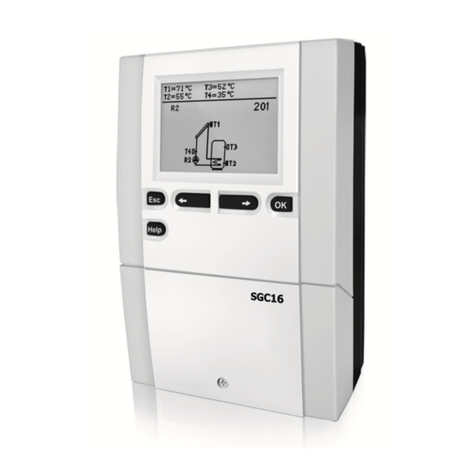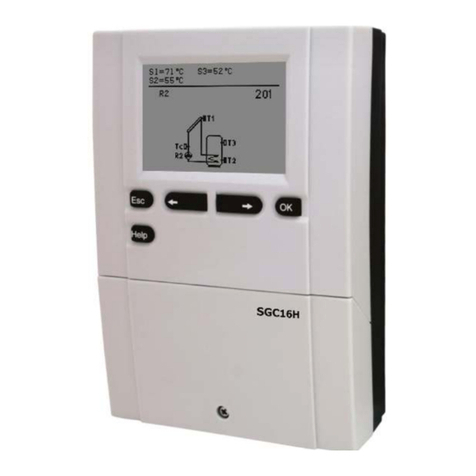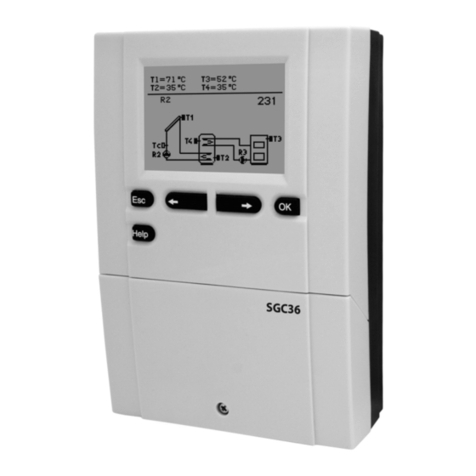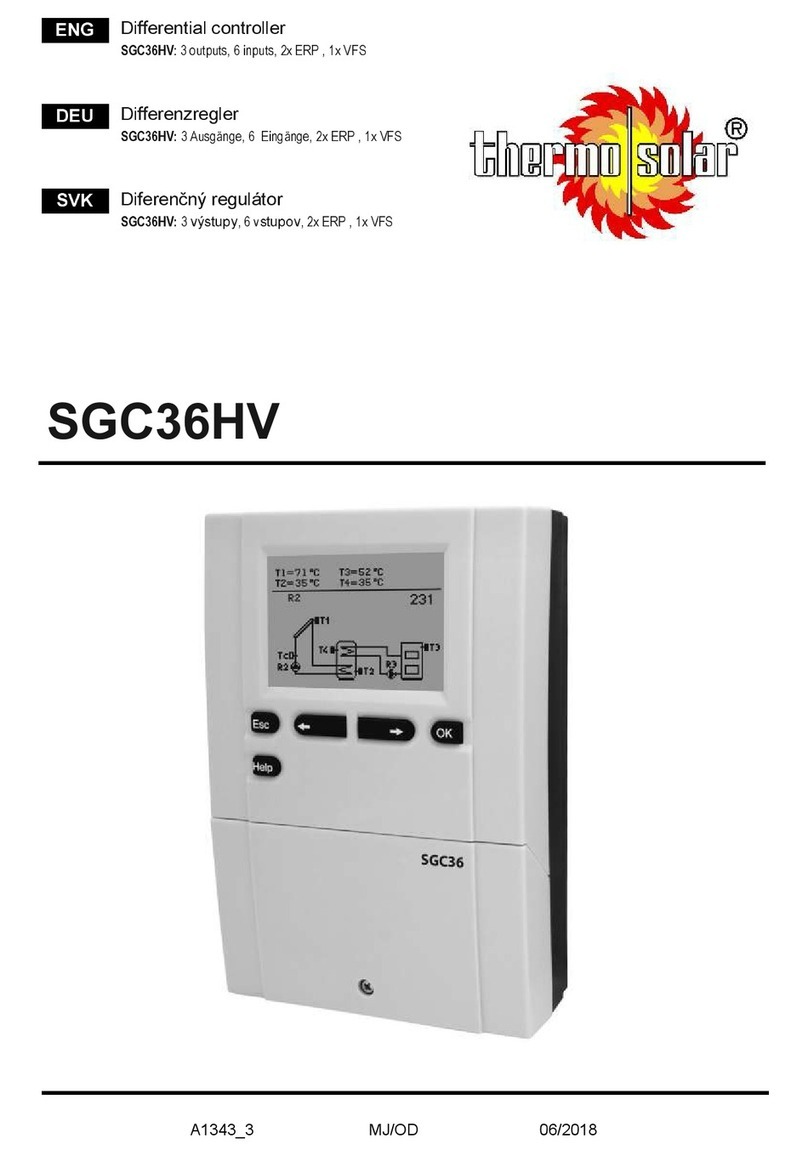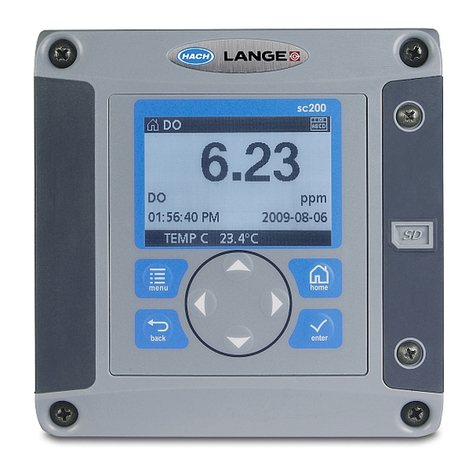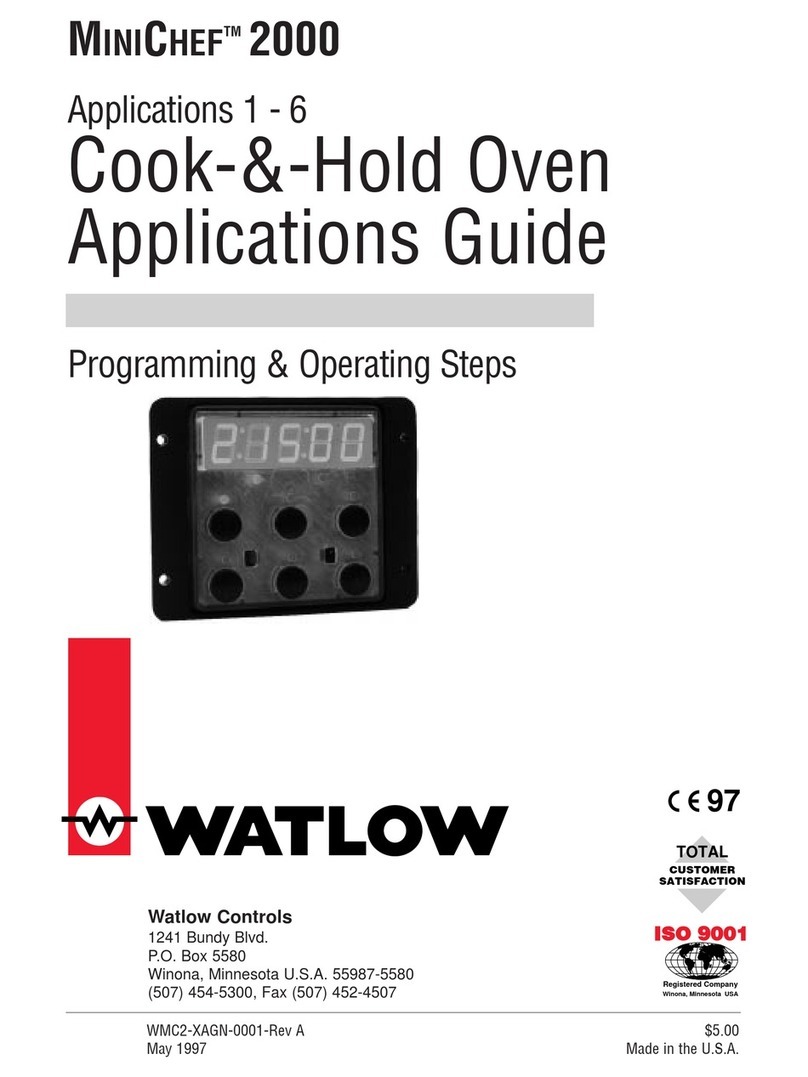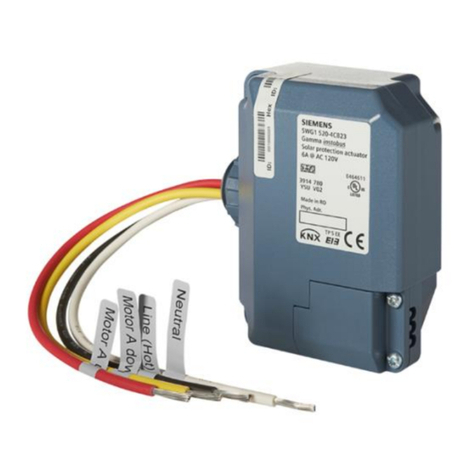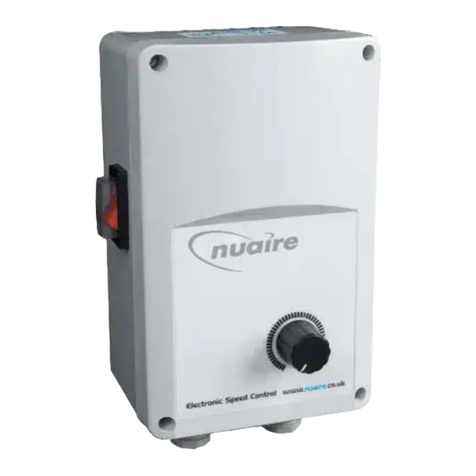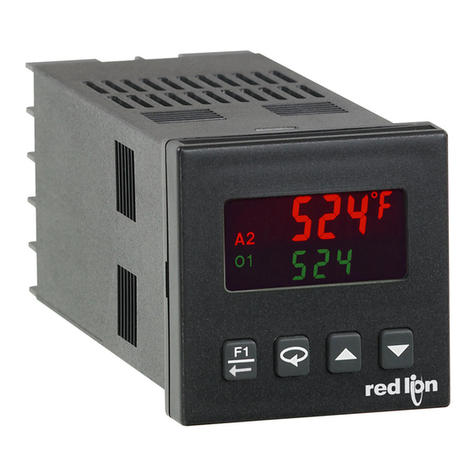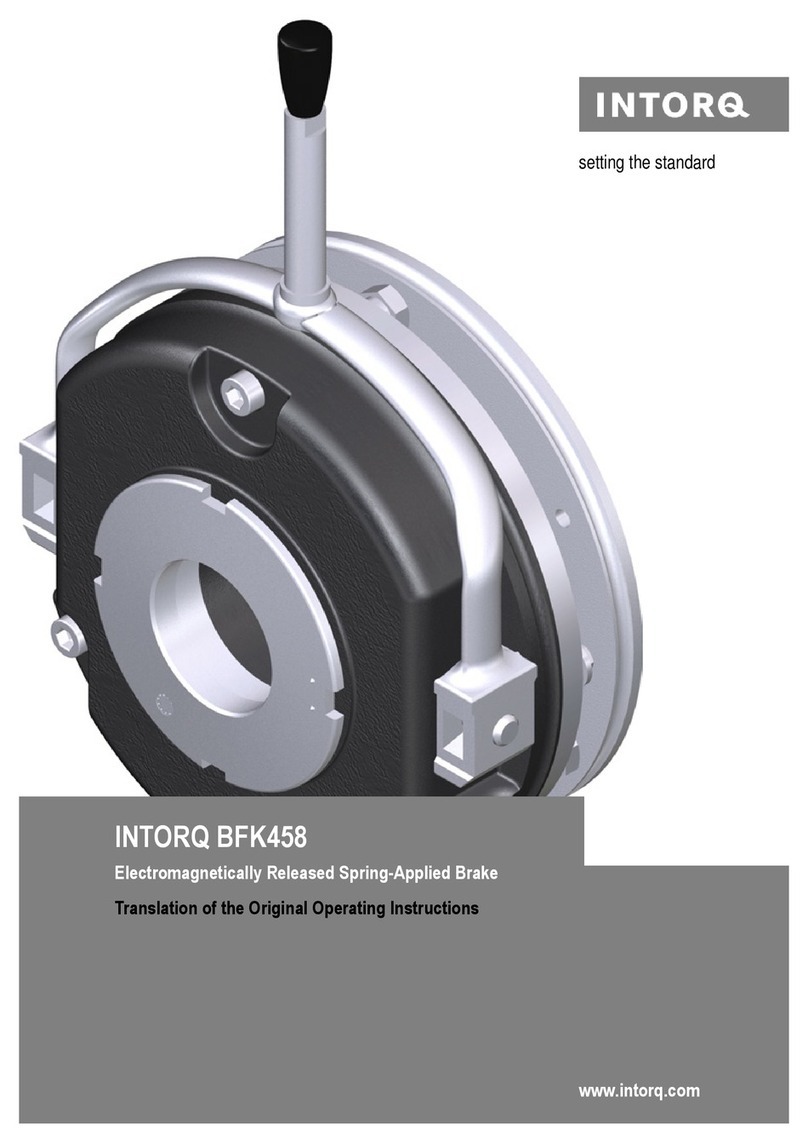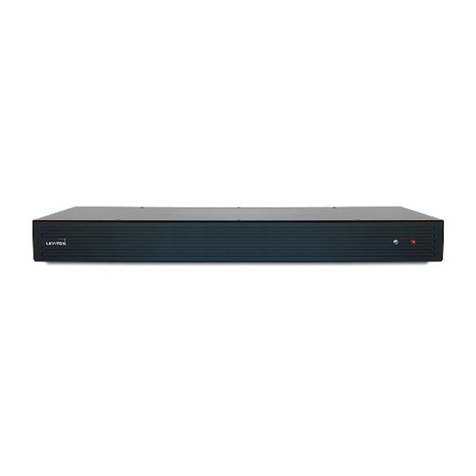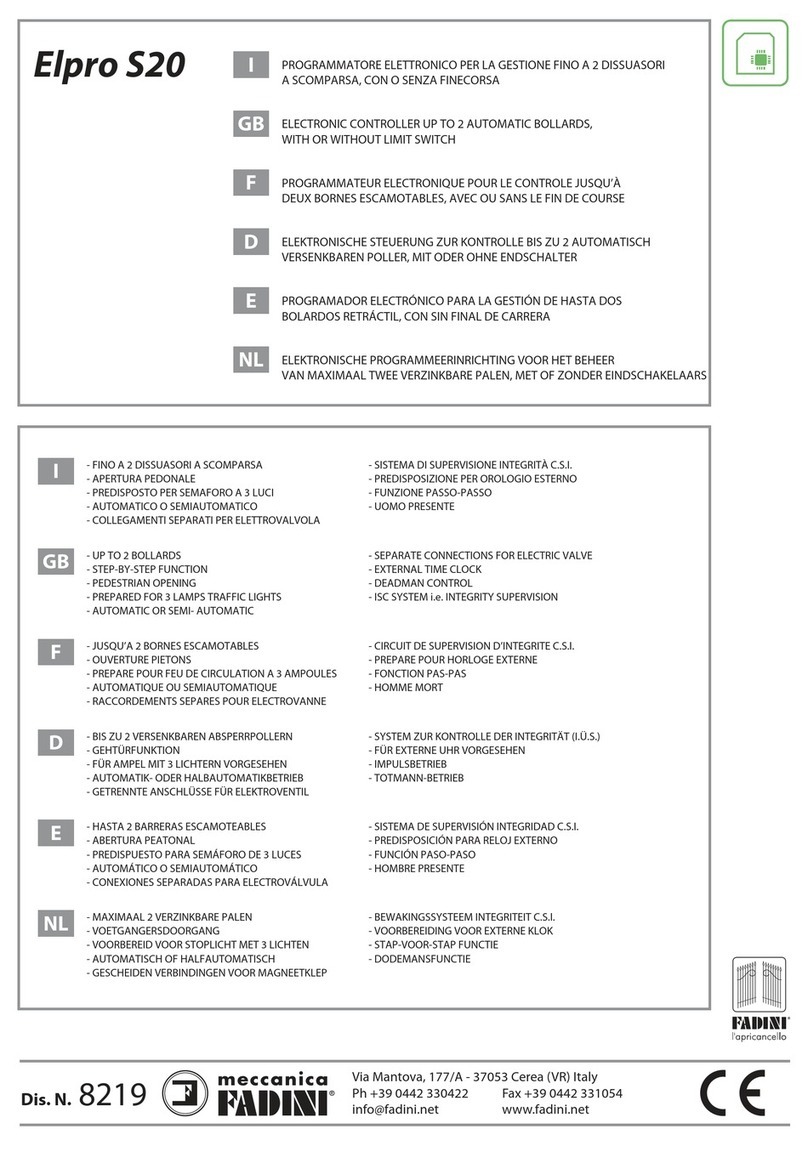Thermo Solar SR34 User manual

Read carefully before installation, commissioning and operation
Solar controller SR34
Installation and operating instructions

A. - Safety instructions 4
A.1. - EC declaration of conformity 4
A.2. - General instructions 4
A.3. - Explanation of symbols 4
A.4. - Changes to the unit 5
A.5. - Warranty and liability 5
B. - Description of controller 6
B.1. - Specifications 6
B.2. - Temperature resistance table
for Pt1000 sensors 7
B.3. - About the controller 7
B.4. - Scope of supply 7
B.5. - Disposal and pollutants 7
C. - Installation 8
C.1. - Electrical connection 8
C.2. - Wall instalion 9
C.3. - Installing the
temperature sensors 11
D. - Terminal connection 12
D.1. - Terminal connection diagram 12
D.2. - Hydraulic variants / systems 13
E. - Operation 19
E.1. - Display and input 19
E.2 - Commissioning help 20
E.3 Free commissioning 20
E.4 Menu sequence 21
1. - Measurement values 22
2. - Statistics 23
2.1. - Operating hours 23
2.2. - Heat output 23
2.3. - Graphic overview 23
2.5. - Message log 23
2.4. - Reset/clear 23
3. - Operating modes 24
3.1. - Automatic 24
3.2. - Manual 24
3.3. - Off 24
4. - Settings 25
4.1. - Tmin S (X) 25
4.2. - Tmax S (X) 25
4.3. - Tmax SB 25
4.4. - Tmax SB WT 26
4.5. - T Solar S (X) 26
4.6. - Priority S(X) 26
4.7. - T-priority 26
4.8. - Loading time 26
4.9. - Increase 27
5. - Protective functions 28
5.1. - System protection 28
5.2. - Collector protection 28
5.3. - Recooling 29
5.4. - Frost Protection 29
5.5. - Seizing protection 29
5.6. - Collector alarm 29
6. - Special functions 30
6.1. - Program selection 30
6.2. - Pump menu 30
6.2.1. - Type of pump 30
6.2.2. - Pump 30
6.3. - Speed control R1 / R2 31
6.3.1. - Modes 31
6.3.3. - Purging time 31
6.3.2. - Sweep time 31
6.3.4. - max. speed 32
6.3.5. - min. speed 32
6.3.6. - Setpoint 32
6.4. - Relay functions 33
6.4.1. - Solar bypass 33
6.4.1.1. - Variant 33
6.4.1.2. - Bypass (sensor) 33
6.4.2. - Thermostat 34
6.4.2.1. - TH Set 34
6.4.2.2. - TH hysteresis 34
6.4.2.3. - Thermostat sensor 1 34
6.4.2.4. - Thermostat sensor 2 34
6.4.2.5. - T eco 34
6.4.1.3. - Storage 34
6.4.3.1. - Energy saving mode 35
6.4.3.2. - Periods 35
6.4.3. - Thermostat 2 35
6.4.4. - Cooling 36
6.4.4.1. - Co T set 36
6.4.4.2. - Co hysteresis 36
6.4.4.3. - Cooling (sensor) 36
6.4.4.4. - Periods 36
6.4.5. - Return flow increase 37
6.4.5.1. - RF Tmax 37
6.4.5.2. - T return flow 37
6.4.5.3. - Return flow (sensor) 37
6.4.5.4. - Storage (sensor) 37
6.4.6. - Collector field cooling 38
6.4.6.1. - Tmax field 38
6.4.6.2. - Hys min 38
6.4.6.3. - Hys max 38
6.4.6.4. - Field cooling sensor 38
6.4.7. - Anti Legionella 39
6.4.7.1. - AL T set 39
6.4.7.2. - AL residence time 39
6.4.7.3. - Last AL heat 39
6.4.7.4. - AL sensor 1 39
6.4.7.5. - AL Sensor 2 39
6.4.7.6. - AL-times 39
6.4.8. - Heat transfer 40
6.4.8.1. - T Heat transfer 40
6.4.8.2. - Setpoint 40
6.4.8.3. - HT Tmin 40
6.4.8.4. - HT Source (sensor) 40
6.4.8.5. - HT Drain (Target sensor) 40
6.4.9. - Difference 41
6.4.9.1. - T difference 41
6.4.9.2. - DF source (sensor) 41
6.4.9.3. - Diff Tmin 41
6.4.9.4. - DF Drain (sensor) 41
6.4.9.5. - DF Tmax 41
6.4.10. - Solid fuel boiler 42
6.4.10.1. - SF Tmin 42
6.4.10.2. - T Solid fuel 42
6.4.10.3. - SF Tmax 42
6.4.10.4. - Boiler sensor 42
6.4.10.5. - Storage sensor 42
6.4.11. - Error message 42
6.4.12. - Pressure monitor 43
6.4.12.1. - Pressure monitor 43
6.4.12.2. - RPS1 / RPS2 43
6.4.12.3. - Pmin 43
6.4.12.4. - Pmax 43
6.4.13. - Booster pump 43
6.4.13.1. - Filling time 43
6.4.14. - Parallel operation R (X) 44
6.4.14.1. - Delay 44
6.4.14.2. - Followup time 44
6.4.15. - Always on 44
6.4.16. - Heating circuit 44
6.4.16.1. - Room set day 44
6.4.16.2. - Room set night 44
6.4.16.3. - Room sensor 44
6.4.16.4. - Periods 44
6.5. - Heat quantity 45
6.5.1. - Constant flow 45
6.5.1.1. - Flow sensor (X) 45
6.5.1.2. - Return sensor 45
6.5.1.3. - Anti freeze type 45
6.5.1.4. - Glycole percentage 45
6.5.1.5. - Flow rate (X) 45
6.5.1.6. - Offset T 45
6.5.2. - VFS (X) 46
6.5.2.1. - VFS Typ 46
6.5.2.2. - VFS - Position 46
6.5.2.3. - Reference sensor 46
6.6. - Pressure monitor 46
6.6.1. - Pressure monitor 46
6.6.1.1. - RPS1 / RPS2 46
6.6.1.2. - Pmin 46
6.6.1.3. - Pmax 46
6.7. - Sensor calibration 47
6.8. - Commissioning 47
6.9. - Factory settings 47
6.10. - Start aid function 47
6.11. - Time and date 48
6.12. - Daylight saving time 48
6.13. - Sleep mode 48
6.14. - Temperature unit 48
7. - Menu lock 49
8. - Service values 49
9. - Languages 49
Z.1. Malfunctions with
error messages 50
Z.2 Replacing the fuse 51
Z.3 Maintenance 52
J. - Appendix 53
J.14.1. - Pump 53
J.14.2. - Output Signal 53
J.14.3. - PWM off 53
J.14.4. - PWM on 53
J.14.5. - PWM Max 53
J.17.3 - 0-10V off 53
J.17.4 - 0-10V on 53
J.17.5 - 0-10V Max 53
J.14.6. - Speed when „On“ 53
J.14.7. - Show signal 53
o
Table of content

3
Version 1
3 mechanical relays (2 on/off, 1 changeover contact)
1 PWM / 0-10V for high efficency pumps
5 PT1000 temperature sensor inputs
Version 2
2 mechanical relays (1 on/off, 1 change-over contact)
1 electronic relay
for speed control of standard pumps
1 PWM / 0-10V for high efficency pumps
5 PT1000 temperature sensor inputs
Version 3
3 mechanical relays (2 on/off, 1 changeover contact)
2 PWM / 0-10V for high efficency pumps
6 PT1000 temperature sensor inputs
2 VFS / RPS direct sensor inputs
Version 4
1 mechanical relay (change-over contact)
2 electronical relays
for speed control of standard pumps
2 PWM / 0-10V for high efficency pumps
6 temperature sensor inputs
2 VFS / RPS direct sensor inputs
This manual applies to the following hardware versions:
When you are unsure which version you have, check the type label on the side of the controller.
If the version is not readable here, open the controller’s “Service values” menu. The version is
shown in the first line of the service values.

4
Safety instructions
By affixing the CE mark to the unit the manufacturer declares that the SR34 conforms to the following relevant
safety regulations:
- EC low voltage directive 2006/95/EC
- EC electromagnetic compatibility directive 2004/108/EC
Conformity has been verified and the corresponding documentation and the EC declaration of conformity are kept
on file by the manufacturer.
A.1. - EC declaration of conformity
These installation and operating instructions contain basic instructions and important information
regarding safety, installation, commissioning, maintenance and the optimal use of the unit. Therefore these
instructions must be read completely and understood by the installation technician/specialist and by the
system user before installation, commissioning and operation of the unit.
The valid accident prevention regulations, VDE regulations, the regulations of the local power utility,
the applicable DIN-EN standards and the installation and operating instruction of the additional system
components must also be observed. The controller does not under any circumstances replace any safety
devices to be provided by the customer!
Installation, electrical connection, commissioning and maintenance of the unit may only be carried out by
specialists who possess the appropriate training.
For the user: Make sure that the specialist gives you detailed information on the function and operation of
the controller. Always keep these instructions in the vicinity of the controller.
A.2. - General instructions
Danger
Caution
A.3. - Explanation of symbols
Failure to observe these instructions can result in danger to life from electric voltage.
Danger
Failure to observe these instructions can result in serious damage to health such as
scalding, or even life-threatening injuries.
Caution
Failure to observe these instructions can result in destruction of the unit or the system, or
damage to the environment.
Information which is especially important for the function and optimal use of the unit and
the system.

5
A.4. - Changes to the unit
• Changes, additions to or conversion of the unit are not permiddled without the written permission from
the manufacturer
• It is likewise forbidden to install additional components that have not been tested together with the unit
• If it becomes clear that safe operation of the unit is no longer possible, for example because of
damage to the housing, then turn the controller off immediately
• Any parts of the unit or accessories that are not in perfect condition must be exchanged immediately
• Use only original spare parts and accessories from the manufacturer.
• Markings made on the unit at the factory must not be altered, removed or made illegible
• Only the settings actually described in these instructions may be made on the controller
Changes to the unit can compromise the safety and function of the unit or the entire system.
Danger
Description of controller
The controller has been manufactured and tested with regard to high quality and safety requirements. The
unit is subject to the statutory guarantee period of two years from the date of sale.
The warranty and liability shall not include, however, any injury to persons or material damage that is
attributable to one or more of the following causes:
- Failure to observe these installation and operating instructions
- Improper installation, commissioning, maintenance and operation
- Improperly executed repairs
- Unauthorised structural changes to the unit
- Installation of additional components that have not been tested together with the unit
- Any damage resulting from continued use of the unit despite an obvious defect
- Failure to use original spare parts and accessories
- Use of the device for other than its intended purpose
- Operation above or below the limit values listed in the specifications
- Force majeure
A.5. - Warranty and liability

6
Description of controller
Electrical specifications:
Mains voltage 100 - 240VAC
Mains frequency 50 - 60Hz
Power consumption 0,5W - 2,5W
Internal fuse T2A / 250V slow blow
Protection category IP40
Protection class II
Overvoltage Category II
Degree of Pollution Category II
Vers.1 Vers.2 Vers.3 Vers.4
mechanical relay 460VA for AC1 / 460W for AC3 3 (R1-R3) 2 (R2-R3) 3 (R1-R3) 1 (R3)
electronic relay min.5W...max.120W for AC3 - 1 (R1) - 2(R1-R2)
0-10V output, tolerance 10%, 10 k load or
PWM output freq. 1 kHz, level 10 V
11 22
PT1000 sensor input measuring range -40°C to 300°C 5 5 6 6
VFS / RPS inputs
0°C-100°C (-25°C /120°C short term)
-22
1 l/min - 12 l/min (VFS1-12)
2 l/min - 40 l/min (VFS2-40)
5 l/min - 100 l/min (VFS5-100)
10 l/min - 200 l/min (VFS10-200)
0-0,6 bar
0-1 bar
0-1,6 bar
0-2,5 bar
0-4 bar
0-6 bar
0-10 bar
Network connections
CAN Bus
Permissible cable length of sensors and appliances:
Collector and outdoor sensor <30m
other PT1000 sensors <10m
VFS/RPS Sensoren <3m
CAN <3m
PWM / 0...10V <3m
electronic relay <3m
mechanichal relay <10m
Real Time Clock RTC with 24 hour power reserve
Permissible ambient conditions:
Ambient temperature
for controller operation 0°C...40°C
for transport/storage 0°C...60°C
Air humidity
for controller operation max. 85% rel. humidity at 25°C
for transport/storage no moisture condensation permiddled
Other specifications and dimensions
Housing design 3-part, ABS plastic
Installation methods Wall installation, optionally panel installation
Overall dimensions 163mm x 110mm x 52mm
Aperture installation
dimensions 157mm x 106mm x 31mm
Display Fully graphical display, 128 x 128 dots
Light diode Multicolor red/green
Operation 4 entry keys
B.1. - Specifications

7
Description of controller
B.2. - Temperature resistance table for Pt1000 sensors
°C 0 102030405060708090100
1000 1039 1077 1116 1155 1194 1232 1270 1308 1347 1385
The Temperature Difference Controller SR34 facilitates efficient use and function control of your solar or
heating system. The device is impressive most of all for its functionality and simple, almost self-explanatory
operation. For each step in the input process the individual entry keys are assigned to appropriate functions
and explained. The controller menu contains headwords for the measured values and settings, as well as
help texts or clearly-structured graphics.
The SR34 can be used as a solar controller for the various system variants illustrated and explained under
„D.2. - Hydraulic variants / systems“ on page 13.
Important characteristics of the SR34:
- Depiction of graphics and texts in a lighted display
- Simple viewing of the current measurement values
- Analysis and monitoring of the system by means of statistical graphics,etc.
- Individual configuration of special functions
- Extensive setting menus with explanations
- Menu block can be activated to prevent unintentional setting changes
- Resetting to previously selected values or factory settings
- A wide range of additional functions are available.
The controller is available in 4 different versions. See page 3.
B.3. - About the controller
- Solar controller SR34
- 3 screws 3,5x35mm and 3 plugs 6mm for wall installation
- 12 strain relief clips with 24 screws, replacement fuse 1x T2A / 250V
- Installation and instructions manual SR34
Optionally contained depending on design/order:
- PT1000 temperature sensors and immersion sleeves
Additionally available:
- Pt1000 temperature sensor, immersion sleeves, overvoltage protection,
- Data Logger with Ethernet connection
B.4. - Scope of supply
B.5. - Disposal and pollutants
The unit conforms to the European RoHS directive 2002/95/EC for the restriction of the use of certain
hazardous substances in electrical and electronic equipment.
Caution
The unit must not under any circumstances be disposed of with ordinary household refuse.
Dispose of the unit only at appropriate collection points or ship it back to the seller or
manufacturer.

8
Installation
Controller and VFS sensor have to have the same ground potential. The VFS sensor uses a
functional earth connector (PELV). The PE-connector of the controller has to be connected
to the pipe system near the sensor.
Caution
C.1. - Electrical connection
Danger
Before working on the unit, switch off the power supply and secure it against being
switched on again! Check for the absence of power!
Electrical connections may only be made by a specialist and in compliance with the
applicable regulations.
Do not use the controller if the housing shows visible damage.
Caution
Low-voltage cables such as temperature sensor cables must be routed separately from
mains voltage cables. Feed temperature sensor cables only into the left-hand side of the
unit, and mains voltage cables only into the right-hand side.
Caution
The customer must provide an all-pole disconnecting device, e.g. a heating
emergency switch.
Caution
The cables being connected to the unit must not be stripped by more than 55mm, and the
cable jacket must reach into the housing just to the other side of the strain relief.

9
Installation
Install the controller only in dry areas and under the ambient conditions described under B.1
“Specifications”.
1. Unscrew cover screw completely
2. Carefully pull upper part of housing from lower
part.
3. Set upper part of housing aside, being sure not to
touch the electronics when doing so.
4. Hold the lower part of the housing up to the
selected position and mark the 3 mounting holes.
Make sure that the wall surface is as even as possible
so that the housing does not become distorted when
it is screwed on.
5. Using a drill and size 6 bit, drill 3 holes at the points
marked on the wall and push in the plugs.
6. Insert the upper screw and screw it in slightly.
7. Fit the upper part of the housing and insert the
other two screws.
8. Align the housing and tighten the three screws.
Achtung
C.2. - Wall instalion
Controller must be inaccessible
from the rear.
Caution
C.2.1.
C.2.2.

10
1. Select necessary
program/hydraulics
(s. „D.2. - Hydraulic
variants / systems“ on
page 13)
2. Strip cables by
55mmmax., insert, fit
the strain relief devices,
strip the last 8-9mm of
the wires (Fig. „C.2.3.“)
3. Open the terminals
using a suitable
screwdriver (Fig.
„C.2.4.“) and make
electrical connections
on the controller
4. Refit terminal
connection cover and
fasten screw.
5. Switch on mains voltage
and place controller in
operation.
C.2.3.
C.2.4.
Installation
Instructions for clamps:
1. Insert screw driver into the upper
hole. Push the lock clamp inside
down.
Keep the screw driver in this position.
2. Insert cable into the lower opening.
3. Remove screw driver. The clamp will
lock the cable.

11
The temperature sensor cables must be routed separately from mains voltage cables,
and must not, for example, be routed in the same cable duct!
Caution
Caution
Caution
The controller operates with Pt1000 temperature sensors which are accurate to the degree, thus ensuring
optimal control of system functions.
Caution
Position the sensor precisely in the area to be measured!
Only use immersion, pipe-mounted or flat-mounted sensor suitable for the specific area
of application with the appropriate permissible temperature range.
Sensor cables for S1 and S5 can be extended to a maximum of 30m using a cable with a
cross-section of at least 0.75mm². Sensor cables for S2 to S4 and S6 can be extended to
a maximum of 10m using a cable with a cross-section of at least 0.75mm². Make sure that
there is no contact resistance!
Connect the VFS sensors with the matching jacks.
To prevent damage to the Direct Sensors it is highly recommended to install them in to
the return.
When installing the Vortex Flow Sensors (VFS), observe the correct flow direction!
C.3. - Installing the temperature sensors
Installation

12
Installation
max. 12V
Caution
mains side
100-240VAC
Danger
D.1. - Terminal connection diagram
On the circuit board:
SR34 Version V3+V4:
VFS1 Grundfos Direct Sensor
VFS2 Grundfos Direct Sensor
CAN1 CAN Bus
CAN2 CAN Bus
S6
VFS2 VFS1
CAN CAN
V1
V2
+S5 S4 S3 S2 S1 -PELV R3I
R3 R2 R1 L N
N
-
Low voltage max. 12VAC/DC
Terminal: Connection for:
S1 Temperature sensor 1
S2 Temperature sensor 2
S3 Temperature sensor 3
S4 Temperature sensor 4
S5 Temperature sensor 5
V1 0-10V / PWM signal output
e.g. for control of High Efficiency
pumps
SR34 Version V3+V4:
V2 0-10V / PWM signal output
e.g. for control of High Efficiency
pumps
S6 Temperature sensor 6
+ 12V power supply
Connection of sensor earth to the grey lower
terminal block. The power supply of HE pumps with 0-10V
/ PWM pumps can be connected to the
corresponding relay (V1 -> R1, R2 -> V2), since
the relays are switched on and off with the
signal.
Mains voltage 100-240VAC 50-60Hz
Terminal: Connection for:
R1 Relay 1
R2 Relay 2
R3 Relay 3 (normally open)
R3I Relay 3 (normally closed)
L Netz Außenleiter L
N Netz Neutralleiter N
The neutral conductors are connected to the
lower blue terminals
The PE protective conductor must be
connected to the PE metal terminal block!

13
InstallationInstallation
D.2. - Hydraulic variants / systems
Schema 1
Solar
Schema 2
Solar with
Pool
Schema 3
Solid fuel boiler
Schema 4
Storage
transfer
Schema 5
Return flow
increase
Schema 6
Thermostat
Schema 7
Universal
DeltaT
S1 Collector Collector Boiler Storage 1 Storage top Storage top Source
sensor
S2 Storage Pool Storage Storage 2 Return Storage bot-
tom
Target
sensor
S3
S4
S5
S6
VFS1
VFS2
R1 /
V1
Solar
pump
Solar pump Charge pump Pump Pump 1
R2 - -
R3 - - Switching
valve
Thermostat

14
Schema 8
stop valve
Schema 9
Solar with
Pool+WT-Sensor
Schema 10
Solar + Thermo-
stat
Schema 11
Solar + 2-Zone
Storage + Valve
Schema 12
Solar + return flow
increase
Schema 13
Solar +
Bypass
Schema 14
Solar +WT
S1 Source
sensor
Collector Collector Collector Collector Collector Collector
S2 Storage Pool Storage Storage top Storage bottom Storage Storage
S3 Thermostat Storage bottom Storage middle Bypass
S4 Heat exchanger Return Heat exchanger
S5
S6
VFS1
VFS2
R1 /
V1
both pumps Solar pump Solar pump Solar pump Solar pump Solar pump
R2 Secondary pump
R3 Valve Thermostat Bypass valve Bypass valve Bypass valve

15
Schema 15
Solar + 2. Coll-
ector + Valve
Schema 16
Solar + 2. Coll-
ector + Pump
Schema 17
Solar + 2.
storage with
valve
Schema 18
Solar + 2. Sto-
rage + Pump
Schema 19
Solar + Storage
transfer
Schema 20
Solar with pool +
WT
Schema 21
Solar + thermo-
stat as valve
S1 Collector 1 Collector 1 Collector Collector Collector Collector Collector
S2 Storage Storage Storage 1 Storage 1 Storage 1 bottom Pool Storage bottom
S3 Storage 2 Storage 2 Storage 2 top Storage top
S4 Storage 1 top Heat exchanger
S5 Collector 2 Collector 2 Thermostat
S6
VFS1
VFS2
R1 / V1 Solar pump Solar pump
Koll. 1
Solar pump Solar pump
Storage 1
Solar pump Solar pump Solar pump
R2 Solar pump
Koll. 2
Solar pump
Storage 2
Transfer pump Secondary pump
R3 Switching
valve
Switching
valve
Switching valve

16
Schema 22
Solar + Solid fuel-
boiler
Schema 23
Solar + cooling 1
Schema 24
Solar + cooling
2
Schema 25
Solar + cooling
3
Schema 26
Solar + WT + 2
zone storage +
valve
Schema 27
Solar + WT +
2 storage with
valve
S1 Collector Collector Collector Collector Collector Collector
S2 Storage Storage Storage Storage bot-
tom
Storage top Storage 1
S3 Solid fuelBoiler Storage top Storage bottom Storage 2
S4 Heat exchanger Heat exchanger
S5
S6
VFS1
VFS2
R1 /
V1
Solar pump Solar pump Solar pump Solar pump Solar pump Solar pump
R2 Solid fuelboiler
pump
KühlPump KühlPump Secondary
pump
Secondary pump
R3 Cooler Switching valve Switching valve

17
Schema 28
Solar+Valve for
Pool+WT
Schema 29
Solar + Solid fuel-
Boiler + S4
Schema 30
2x Solar
Schema 31
Solar + Storage
transfer + Thermo-
stat
Schema 32
Solar + Return lift+
Thermostat
Schema 33
Solar + 2.
Collector +
Valve + 2.
Storage with
Valve
S1 Collector Collector Collector 1 Collector Collector Collector 1
S2 Storage Storage bottom Storage 1 Storage 1 bottom Storage bottom Storage 1
S3 Pool SF-Boiler Storage 2 Storage 1 top Storage middle Storage 2
S4 Heat exchanger Storage top Return Storage top
S5 Collector 2 Thermostat Thermostat Collector 2
S6
VFS1
VFS2
R1 / V1 Solar pump Solar pump Solar pump 1 Solar pump Solar pump Solar pump
R2 Boiler pump Solar pump 2 Charge pump Thermostat Switching val-
ve Collector
R3 Secondary pump +
Switching valve
Thermostat Returnvalve Switching val-
ve Storage

18
Schema 34
Solar+2.Collector
with Pump+2.Sto-
rage with Valve
Schema 35
Solar+Valve for
Pool+WT
Schema 36
Solar+3 Storage
with Pumps
Schema 37
Solar+3 Storage with
Valves
S1 Collector1 Collector Collector Collector
S2 Storage 1 Storage Storage 1 Storage 1
S3 Storage 2 Pool Storage 2 Storage 2
S4 Heat exchanger
(secondary)
Storage 3 Storage 3
S5 Collector 2
S6
VFS1
VFS2
R1 / V1 Solar pump 1 Solar pump Solar pump 1 Solar pump
R2 Solar pump 2 Secondary pump Solar pump 2 Switching valve 1 (1 or
2/3)
R3 Switching valve Switching valve Solar pump 3 Switching valve 2 (2
or 3)

19
Operation
Examples of display symbols:
Pump (rotates in operation)
Valve (direction of flow in black)
Collector
Storage
Pool
Temperature sensor
Heat exchanger
Load pause (see Load time)
Warning / error message
New information available
Logging is active
More symbols can be found in the
chapter „Special functions“
(1)
(2)
(3)
(4)
The display (1), with its extensive text and graphics mode,
is almost self-explanatory, allowing easy operation of the
controller.
To change from the overview to the settings menu, press the
„esc“ key.
The green status LED (2) lights up when a relay is active, the
red LED blinks when an error occurs.
Inputs are made with 4 buttons (3+4), which functions change
context sensitive.
The „esc“ key (3) is always used to cancel or exit a menu.
If applicable there will be a request for confirmation as to
whether the changes which have been made should be
saved.
The function of each of the other three keys (4) is shown in
the display line directly above the keys; the right-hand key is
generally has a confirmation and selection function.
Examples of key functions:
+/- = enlarge/shrink values
/= scroll menu down/up
yes/no = approve/reject
Info = additional information
Back = to previous screen
ok = confirm selection
Confirm = confirm setting
E.1. - Display and input

20
Operation
E.2. - Commissioning help
takes you back step by step to the selection mode, thus cancelling the commissioning help. Finally, menu
„3.2. - Manual“ on page 24 should be used to test the switch outputs with the consumers connected, and
to check the sensor values for plausibility. Then switch on automatic mode.
The first time the controller is turned on and after the
language and time are set, a query appears as to
whether you want to parametrise the controller using the
commissioning help or not. The commissioning help can
also be terminated or called up again at any time in the
special functions menu. The commissioning help guides
you through the necessary basic settings in the correct
order, and provides brief descriptions of each parameter
in the display.
Pressing the “esc” key takes you back to the previous
value so you can look at the selected setting again or
adjust it if desired. Pressing the “esc“ more than once
Caution
Observe the explanations for the the individual parameters on the following pages, and
check whether further settings are necessary for your application.
E.3. - Free commissioning
If you decide not to use the commissioning help, you should make the necessary settings in the following
sequence:
- Menu 9. Language, page 49
- Menu 6.23 Time and Date, page 48
- Menu 6.1 Programmwahl, page 30
- Menu 4. Settings, all values, page 25
- Menu 5. Protective functions, if necessary, page 28
- Menu 6. Special functions, if necessary, page 30
Finally, menu „3.2. - Manual“ on page 24 should be used to test the switch outputs with the consumers
connected, and to check the sensor values for plausibility. Then switch on automatic mode.
Caution
Observe the explanations for the the individual parameters on the following pages, and
check whether further settings are necessary for your application.
Table of contents
Other Thermo Solar Controllers manuals
Popular Controllers manuals by other brands
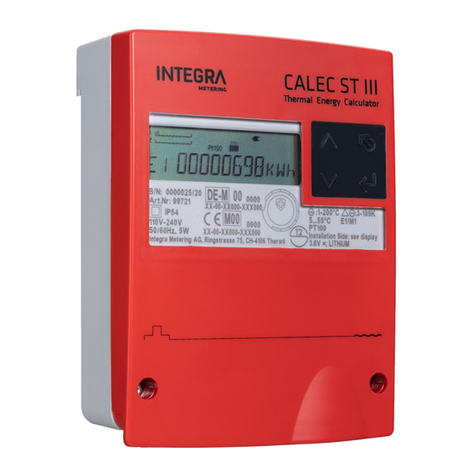
Integra
Integra CALEC ST III Standard installation manual

Mitsubishi Electric
Mitsubishi Electric MELSEC-QS Series Safety Application Guide
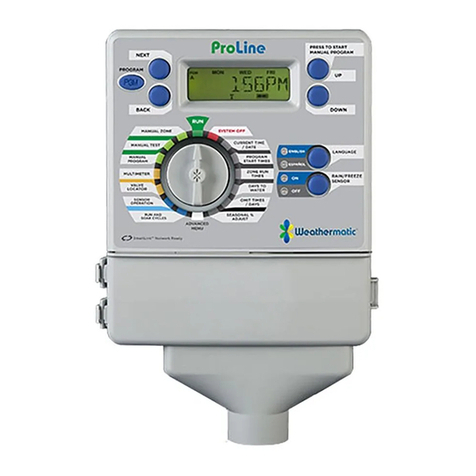
Weathermatic
Weathermatic ProLine 800 Series owner's manual
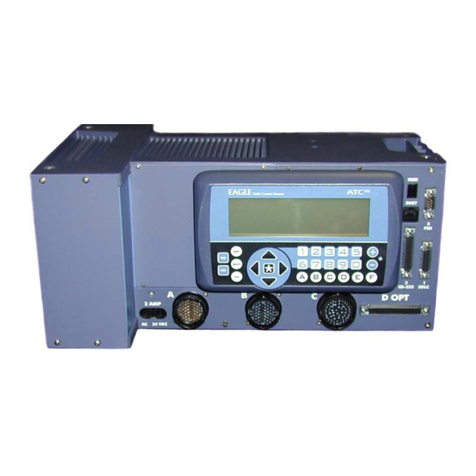
Siemens
Siemens M50 user manual

enphase
enphase Q-BA-3-1P-60 Quick install guide
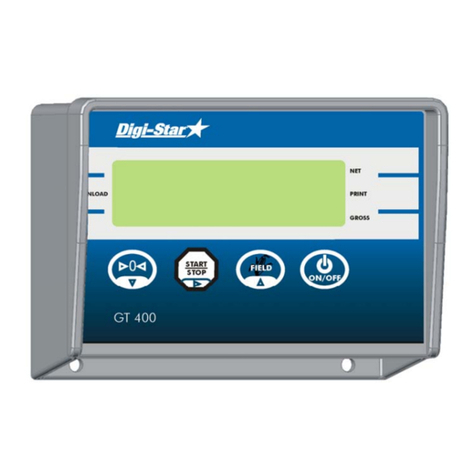
AGRI TRONIX
AGRI TRONIX DIGI-STAR GT400 Operator's manual
